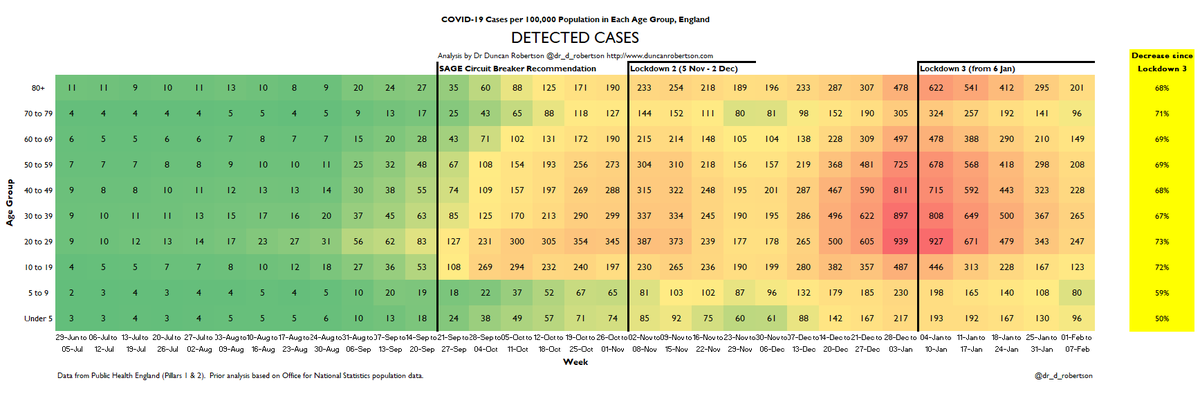
Public Health England @PHE_uk have published the update for variants of concern and variants under investigation. Note that these are cases detected (and that these may be detected as the result of surge testing).
Rises in VUI B.1.525 (+26 since Tuesday) & VUI B1.1.318 (+10)
Rises in VUI B.1.525 (+26 since Tuesday) & VUI B1.1.318 (+10)

Here is the data table (data from @PHE_uk). Note B.1.1.7 is excluded in the chart above. To emphasise, these are the result of non-uniform testing and sequencing. 

Description of variants (from @PHE_uk):
The VOC-20DEC-01 variant was first detected in the UK and was first sequenced in the UK in September 2020.
The VOC-20DEC-02 variant was first detected in South Africa and was first sequenced in the UK in December 2020.
The VOC-20DEC-01 variant was first detected in the UK and was first sequenced in the UK in September 2020.
The VOC-20DEC-02 variant was first detected in South Africa and was first sequenced in the UK in December 2020.
The VUI-21JAN-01 variant was first detected in Brazil and was first sequenced in the UK in November 2020.
The VOC-21JAN-02 variant was first detected in Japan in travellers from Brazil in January 2021 and was first detected in the UK in February 2021.
The VOC-21JAN-02 variant was first detected in Japan in travellers from Brazil in January 2021 and was first detected in the UK in February 2021.
The VUI-21FEB-01 variant was first detected in the UK in December 2020.
The VOC-21FEB-02 variant was first detected in the UK in December 2020.
The VUI-21FEB-03 variant was first detected in the UK in December 2020.
The VOC-21FEB-02 variant was first detected in the UK in December 2020.
The VUI-21FEB-03 variant was first detected in the UK in December 2020.
The VUI-21FEB-04 variant’s location of first detection is to be confirmed.
The VUI-21MAR-01 variant’s location of first detection is to be confirmed.
The VUI-21MAR-02 variant’s location of first detection is to be confirmed.
The VUI-21MAR-01 variant’s location of first detection is to be confirmed.
The VUI-21MAR-02 variant’s location of first detection is to be confirmed.
Many of these variants will have first been detected in the UK, but some may have been imported from overseas. See e.g. latest addition, P3
news.sky.com/story/covid-19…
"One of the cases is linked with international travel and the other is currently under investigation."
news.sky.com/story/covid-19…
"One of the cases is linked with international travel and the other is currently under investigation."
The risk of variants is that vaccines may be less effective. See e.g.
This is one reason that some variants are said to be "Variants of Concern" (highlighted in bold in the chart above).
We remain in a contest between the virus, vaccines and variants.
https://twitter.com/AdamJKucharski/status/1372273939427246080
This is one reason that some variants are said to be "Variants of Concern" (highlighted in bold in the chart above).
We remain in a contest between the virus, vaccines and variants.
• • •
Missing some Tweet in this thread? You can try to
force a refresh















